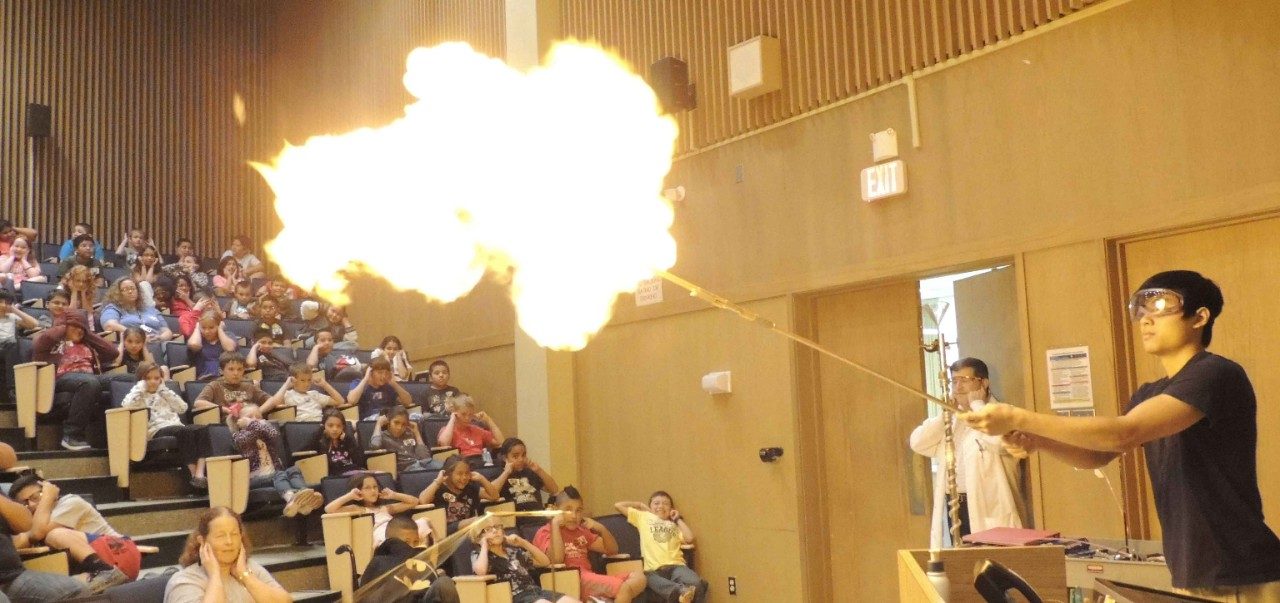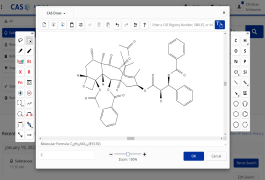How to RAMP Up Safety for Demos

Chemical demonstrations can be fun for grade school students who find color changes and other features of chemical “magic shows” interesting and mysterious! Sadly, there have been situations where students watching such demonstrations were severely injured. The same features that make many demonstrations exciting can also make them dangerous, so it’s important to think about both the value of each chemical demonstration and the conditions for conducting them safely.
When you’re doing outreach demonstrations, you’re not only entertaining people, you’re also teaching them chemistry. Demonstrations can be followed with questions like “Why did that happen?” or “What must be happening at the molecular level?” Or you can ask audiences to make predictions, such as “What do you think will happen when…?” The worst outcome is not that some demonstration might not work as planned; it’s that someone could get injured. It is important to send the message that chemistry can be both exciting and safe — so long as the proper precautions are taken.
Incidents that have made the news recently have involved unexpected flash fires in the “Rainbow” demonstration.
Traditionally, metal salts are dissolved in methanol, and the flame from the burning methanol produces colors associated with electronic transitions in the vaporized metal atoms. This is a variant of what happens in fireworks. Because methanol burns with an almost invisible flame, it is easy to assume that the flame is extinguished when it’s actually still lit.
If the demonstrator adds more methanol (usually from a large bottle), the vapors from the bottle are ignited and cause a jet of burning methanol to shoot out of the bottle. This flame can be projected several feet, and the demonstrator can easily drop the bottle, leading to a large flash fire. In many instances where this has occurred, students have suffered very serious burns.
To protect your audience (and yourself) from potential hazards, a little forethought goes a long way. A common paradigm in chemical safety is summed up in the mnemonic
RAMP: Recognize hazards, Assess risk, Minimize risk, and Prepare for emergencies.
Here’s how you can apply these guidelines to the “Rainbow” demonstration:
• RECOGNIZE that methanol is extremely flammable.
• ASSESS that the risk of flash fires and other severe hazards is very high when methanol is intentionally ignited (as opposed to using methanol only as a solvent, with no source of ignition, which would have a rather low risk).
• MINIMIZE the risk in two ways: (1) redesign the experiment to avoid the use of methanol1,2 or (2) make sure that only small volumes of methanol are present and that the room conditions allow the flame to be seen. The second revision removes the large bottle of methanol and also prevents additional methanol from being added to an already lit fire. In addition, a safety shield should be used as a barrier between the demonstration and the audience, and the audience should be kept at a safe distance.
• PREPARE for emergencies by, in this instance, having an appropriate fire extinguisher handy. When you are doing a chemical demonstration, it should be under the supervision of a faculty member. But, as part of your chemical education, you should think about RAMP for each demonstration you conduct. By doing so, you can make sure that the happy outcomes of entertainment and education is not compromised by a flawed or dangerous demonstration.
Best wishes for your next chemistry demo!
For more information about chemical safety, visit www.acs.org/safety.




